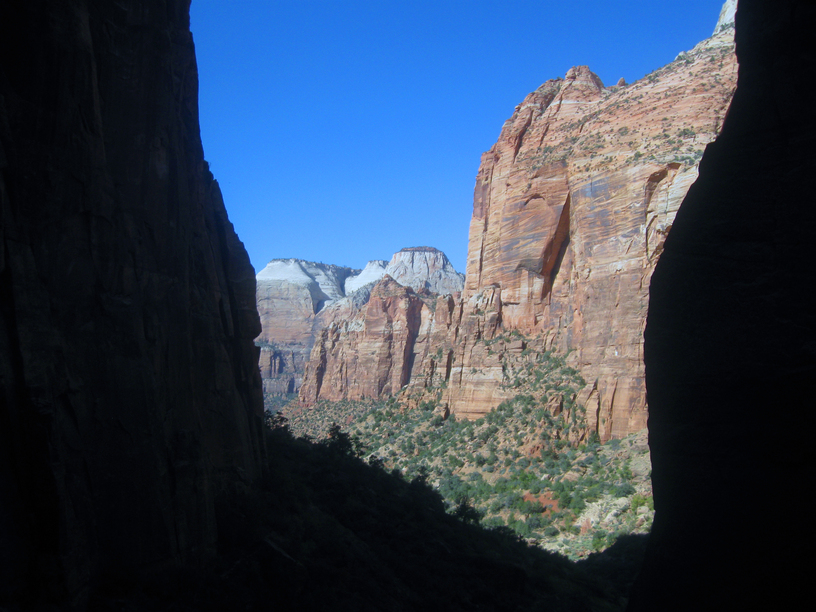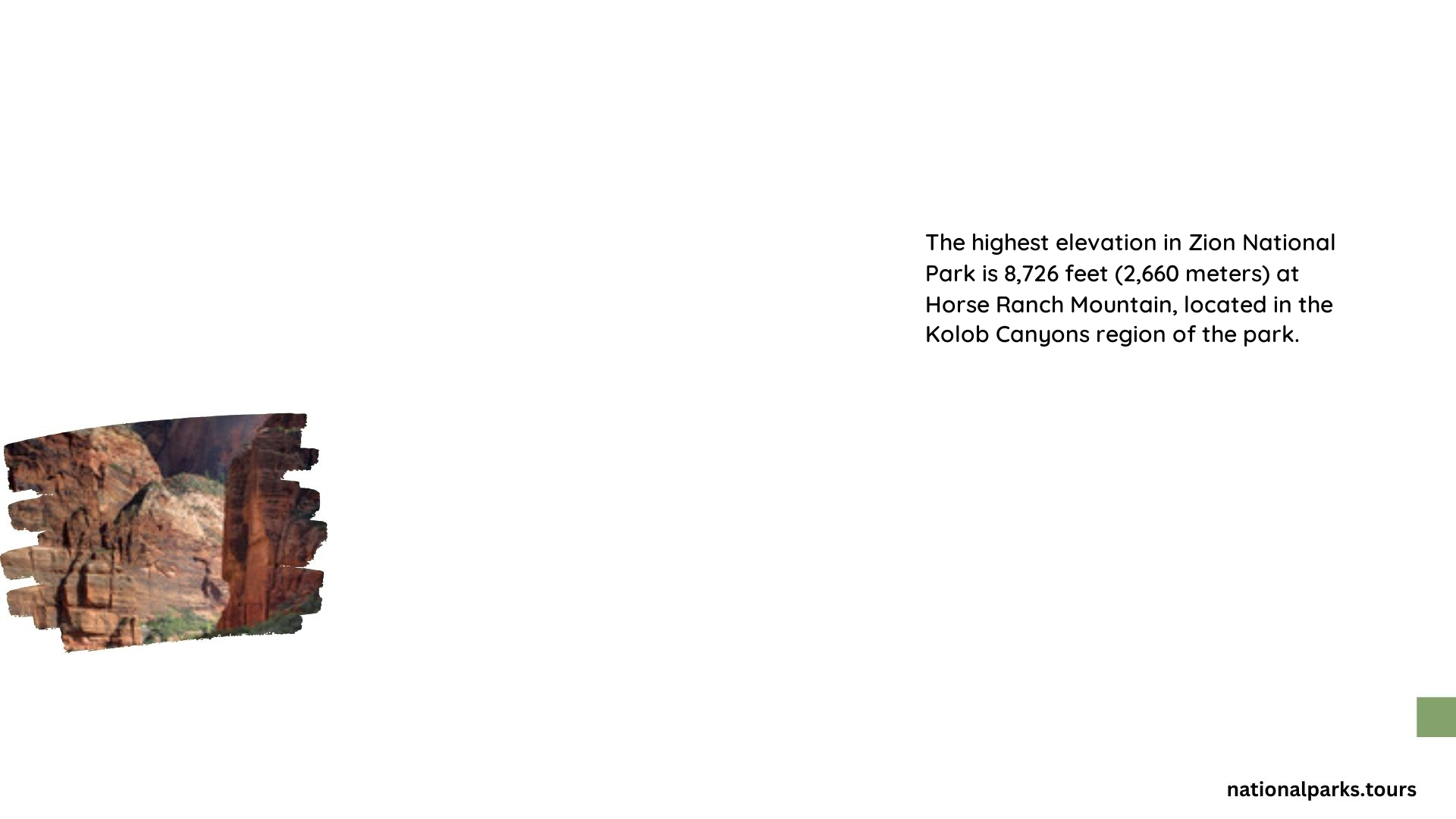Zion National Park, renowned for its stunning red rock formations and diverse landscapes, boasts impressive elevations that challenge and inspire visitors. The park’s highest point reaches 7,733 feet at East Temple, offering breathtaking views of the surrounding canyons and plateaus. This article explores the various high points within Zion, their accessibility, and the experiences they offer to adventurous hikers and nature enthusiasts.
What is the Highest Point in Zion National Park?

The highest elevation in Zion National Park is East Temple, standing at an impressive 7,733 feet above sea level. This majestic peak, while not accessible via maintained trails, represents the pinnacle of Zion’s diverse topography. East Temple’s remote location and lack of established routes make it a point of interest primarily for experienced climbers and researchers rather than casual visitors.
Which Accessible Trails Offer High Elevation Experiences?

While East Temple holds the title for highest elevation, several other trails and viewpoints provide visitors with accessible high-altitude experiences:
- Observation Point
- Elevation: 6,508 feet
- Trail length: 8 miles round-trip
-
Elevation gain: 2,100 feet
-
Angels Landing
- Summit elevation: 5,790 feet
- Trail length: 5 miles round-trip
- Elevation gain: 1,488 to 1,800 feet
These trails offer stunning vistas and challenging hikes for those seeking to experience Zion’s higher elevations.
How Does Angels Landing Compare to Other High Points?
Angels Landing, while not the highest point in the park, is one of the most popular and iconic hikes in Zion. Here’s how it compares:
| Feature | Angels Landing | Observation Point | East Temple |
|---|---|---|---|
| Elevation | 5,790 feet | 6,508 feet | 7,733 feet |
| Accessibility | Maintained trail (permit required) | Maintained trail | No maintained trail |
| Popularity | Very high | High | Low (climbers only) |
| Views | 360-degree panorama | Expansive canyon views | Not typically accessed |
Angels Landing provides a thrilling experience with its narrow ridges and chain-assisted sections, making it a bucket-list hike for many visitors despite not being the highest point in the park.
What Are the Challenges of Hiking to Zion’s High Points?
Reaching Zion’s high elevations presents several challenges:
- Physical Demands:
- Steep ascents
- Long distances
-
High altitude effects
-
Weather Conditions:
- Extreme heat in summer
- Potential ice and snow in winter
-
Sudden weather changes
-
Trail Conditions:
- Exposed sections with steep drop-offs
- Narrow paths requiring careful navigation
-
Potential for loose rocks and unstable terrain
-
Permit Requirements:
- Angels Landing requires a permit obtained through a lottery system
What Preparation is Necessary for High Elevation Hikes in Zion?
To safely enjoy Zion’s high elevation trails, proper preparation is essential:
- Physical Conditioning: Train for steep ascents and long distances
- Gear:
- Sturdy hiking boots
- Sun protection (hat, sunscreen, sunglasses)
- Plenty of water and snacks
- Layers of clothing for changing temperatures
- Planning:
- Check weather forecasts
- Obtain necessary permits
- Start early to avoid afternoon heat and crowds
- Safety:
- Inform someone of your hiking plans
- Carry a first aid kit
- Be prepared to turn back if conditions become unsafe
How Does Elevation Affect the Zion Ecosystem?
Zion’s varying elevations create diverse ecosystems:
- Lower Elevations (3,666 to 5,000 feet):
- Desert-like conditions
- Cottonwood and willow trees along water sources
-
Desert animals like lizards and rattlesnakes
-
Mid Elevations (5,000 to 7,000 feet):
- Pinyon-juniper woodlands
-
Mule deer and wild turkeys
-
Higher Elevations (above 7,000 feet):
- Ponderosa pine forests
- Cooler temperatures
- Mountain lions and bighorn sheep
This elevation-based biodiversity contributes to Zion’s unique appeal and ecological importance.
What Are the Best Times to Experience Zion’s High Elevations?
The optimal times to explore Zion’s high points are:
- Spring (April to May):
- Mild temperatures
- Wildflowers in bloom
-
Potential for occasional rain
-
Fall (September to November):
- Comfortable hiking weather
- Autumn colors in higher elevations
- Less crowded than summer months
Summer can be extremely hot, especially at lower elevations, while winter may bring icy conditions to higher trails.
How Has Climate Change Affected Zion’s High Elevation Areas?
Climate change impacts on Zion’s higher elevations include:
- Shifting vegetation patterns
- Increased wildfire risk
- Changes in snowpack and water availability
- Potential stress on high-altitude wildlife
Park management is actively monitoring these changes to adapt conservation strategies and visitor management practices.
What Safety Precautions Are in Place for High Elevation Trails?
Zion National Park has implemented several safety measures for high elevation trails:
- Trail Maintenance: Regular upkeep to ensure trail stability
- Signage: Clear warnings about trail difficulty and potential hazards
- Permit Systems: Limiting access to prevent overcrowding on dangerous sections
- Ranger Presence: Park staff available for information and emergency response
- Weather Alerts: Updates on dangerous conditions that may affect high elevation areas
Visitors are encouraged to check with park rangers for the most current trail and safety information before attempting any high elevation hikes.
Zion National Park’s highest elevations offer unparalleled views and experiences for those willing to make the ascent. While East Temple stands as the tallest point, accessible trails like Observation Point and Angels Landing provide visitors with the opportunity to experience the park’s breathtaking heights. With proper preparation and respect for the environment, exploring Zion’s high elevations can be a rewarding and unforgettable adventure.
References:
1. https://www.shedreamsofalpine.com/blog/angels-landing-hike
2. https://www.zionponderosa.com/blog/2017/08/get-to-know-the-5-sections-of-angels-landing/
3. https://zionnationalpark.net/hiking-trails/angels-landing/
